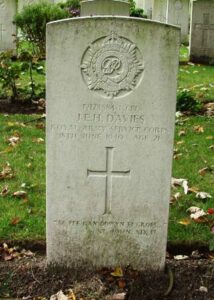Llangynog, is a parish, about six miles south-west from Carmarthen, which covers the villages of Llangynog, Llangain and Bancyfelin. The Parish contains two Manor Houses, Penryn and Coomb, which is now in use as a Care Home, run by the Leonard Cheshire Foundation. The parish church is dedicated to St. Cynog, and contains several war memorials, although the main War Memorial, which commemorates the fallen of the Boer War, Great War and Second World War is situated about 100 yards from the Llangynog Village Hall.
Boer War, 1899-1901
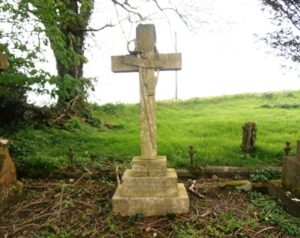
Thomas Morris, Lieutenant, 6th Dragoon Guards. Thomas was born in May 1879, the only son of Thomas and Sarah Morris, of Coomb Mansion. He was educated at Cheltenham College. Thomas entered the 6th Dragoon Guards from the 3rd Battalion, South Wales Borderers in October 1899, and was promoted Lieutenant in May 1900. He embarked for South Africa soon after, where he took part in the advance on Johannesburg and Pretoria, and the subsequent engagements around Belfast and Machadadorp, and the advance to Barberton. On 26 January 1902, Thomas had been called on to surrender after a brief melee against a Boer force near Oshoek. On scornfully refusing, he was shot down dead, and was buried by the Boers in a farmyard at Oshoek, Transvaal. In 1912 his body was exhumed and returned to the family grave at Llangynog. Thomas was just 22 years of age, and is commemorated on the Eleanor Cross Memorial at Cheltenham College. There are several memorials to Thomas inside St. Cynog’s Church, including his original grave marker, a memorial window, a pair of candlesticks and a memorial plaque beneath the window.
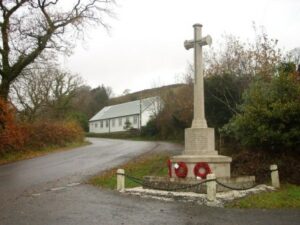
The Great War, 1914-1918
Thomas Ernald Davies, Corporal, 203565, Welsh Regiment. Thomas was born at Carmarthen on 31 May 1897, and was the adopted son of Thomas Vicary Rees and Annie Mary Rees, of School House, Llangunnor. He enlisted at Carmarthen into the Pembroke Yeomanry in July 1915, before being posted to the 9th Battalion, Welsh Regiment. The Battalion formed part of 58 Brigade, 19th (Western) Division, and had fought during the opening attack of the Battle of Loos, and then moved to the Somme, where they took part in the second wave of the attack on Ovillers-La Boiselle on the 1st July, capturing the village at heavy cost, and fought through the Somme Battles of Pozieres and the Ancre in 1916. They then moved North to Ypres, taking part in the Battle of Messines, and fought on the Menin Road and at Polygon Wood, before moving up to Broodseinde, Poelcappelle and Passchendaele Village itself. In 1918 they were caught up in the German Spring Offensive near St. Quentin, where they suffered terrible casualties, and fought at the Battle of Bapaume. They moved to Ypres, but were caught up in the German attack at Messines, and at Bailleul, and Kemmel. After suffering terribly again, they moved South to the quieter French sector to rebuild, but were caught up in the German offensive on the Aisne, where Thomas was killed on 2 June 1918, aged 21. He has no known grave, and so is commemorated on the Soissons Memorial, France. His half-brother Edgar George Rees also fell. (The memorial inside the Church states 2nd SWB, which is incorrect).
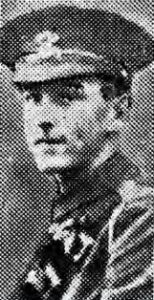
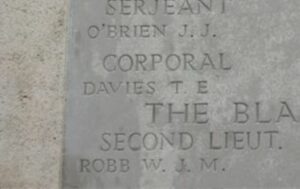
William Davies, Pioneer, 63057, Royal Engineers. William was the son of David and Annie Davies, of Croesyceiliog, Llanybri. William enlisted at Abergavenny into the 38th (Welsh) Division Signal Company, Royal Engineers, and moved to France with the Division in late 1915. After a mauling at the Battle of the Somme in July 1916, whilst capturing Mametz Wood, the Division were pulled out of the line, and moved to Flanders. Here they underwent further training, and took part in the Battles of Pilckem and Langemarck. William was Killed in Action on the opening day of the Battle of Pilckem, on 31 July 1917 aged just 20. He is buried at New Irish Farm Cemetery, just north of Ypres.
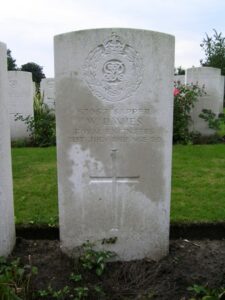
William Morgan Davies, Private, 39579, South Wales Borderers. William was the son of John and Anne Davies, of Llwynon, Bankyfelin. He enlisted at Carmarthen into the army, and was posted to the 2nd Battalion, South Wales Borderers. The battalion was in China at the outbreak of war, and fought at Tsingtao before moving back to the UK, where it joined 87 Brigade, 29th Division. After the Division had been fully assembled, they moved to the Mediterranean, and took part in the landing on Gallipoli on 25 April 1915. They remained at Gallipoli until evacuating on 11 January 1916, and from there were moved to France, arriving at Marseilles on 15 March that year. They fought on the Somme, and moved to the Arras sector in early 1917, where they took part in the Second Battle of the Scarpe. William was killed in action here on 23 April 1917, aged 24. He is remembered on the Arras Memorial, France.
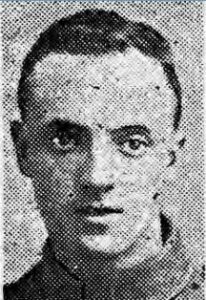
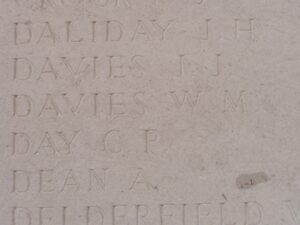
John Howell Edwards, Private, 56906, Welsh Regiment. John was the son of Richard and Keturah Edwards, of Parknewydd, Bankyfelin. He worked as a Porter with the GWR before enlisting at Carmarthen on 11 December 1915 into the Pembroke Yeomanry. John was in Dublin during the riots, before moving to France in 1916, where he was posted to the 9th Battalion, Welsh Regiment. The battalion was then on the Somme, as part of 58 Brigade, 19th (Western) Division. John then saw service with the Battalion during the Battle of Messines in the summer of 1917, and during the later stages of the Battle of Passchendaele. The Division was on the Somme when the German Spring Offensive of 21 March 1918 hit the area, and suffered heavy casualties before being moved back to positions south of Ploegsteert Wood to rest and rebuild. However, a fresh German offensive was launched there the following month, and John was killed on 16 April 1918, during the Battle of Messines. He was 22 years old, and is commemorated on the Tyne Cot Memorial, Belgium. (The memorial inside the Church shows J. L. Edwards, which is incorrect).
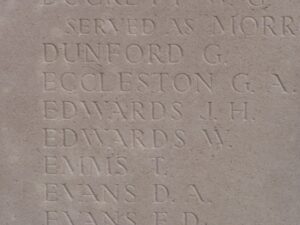
James Evans, Private, 12150, Royal Welsh Fusiliers. James was one of two men of that name born at Llangynog in 1892. He enlisted at Tumble into the 8th Battalion, Royal Welsh Fusiliers. The battalion had formed at Wrexham, becoming attached to 40 Brigade, 13th (Western) Division. Between 6 and 16 July 1915 the Divisional infantry landed on Cape Helles and relieved the 29th Division. They left and returned to Mudros at the end of the month, and the entire Division landed at ANZAC Cove between 3 and 5 August, 1915, taking part in the Battle of Sari Bair. James was killed here on 16 August 1915, aged 23. He has no known grave, and is commemorated on Panel 77-80 of the Helles Memorial, Gallipoli.
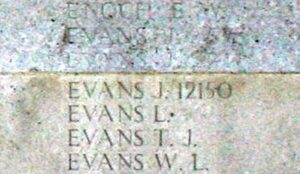
William Howells Gunner, 122051, Royal Artillery. William was the son of Lewis and Mary Howells, of Neptune Villa, Ferryside. He enlisted at Carmarthen into the Royal Artillery, and served with ‘X’, 32nd Trench Mortar Battery. This Battery was attached to the 32nd Division, which had moved to France in 1915. They fought throughout most of the Somme Offensive in 1916, and followed the German retreat to the Hindenburg Line in 1917 before taking part in the Battle of Arras, when the German Spring Offensive was launched against the City in March, 1918. They remained on the Somme, fighting during the retreat towards Albert, then in the advance past Bapaume and on through the mighty Hindenburg Line, which they pushed through on towards the Sambre, where William was killed in action on 4 November 1918. He was 23 years old, and is remembered on the Vis-en-Artois Memorial, France.
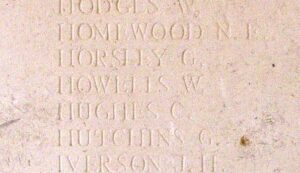
William Arthur Killa, Private, 4301, Welsh Regiment. William was born in Pendine on 30 October 1894, the son of John and Esther Killa. The family was from Laugharne, but had resided at Pendine for several years, before moving to Alltycnap Road, Carmarthen. Williams’s Grandparents stayed in Laugharne. William enlisted into the 1/4th Battalion of the Welsh Regiment in August 1914. The 1/4th was a territorial Battalion, and it formed part of South Wales Brigade. On 17 April 1915 it was attached to 159th Brigade, 53rd Division and on 8 October 1915 amalgamated with 1/5th Battalion forming 4/5th Welsh Composite Battalion. In July 1915, the 53rd Welsh Division was shipped to Egypt and there they trained for the Gallipoli Campaign. On 9 August 1915, the Division landed at Suvla on Gallipoli. The day after landing on the hostile shores of Gallipoli, William was killed in Action. He was just 20 years old and had seen just one day of fighting. He is remembered on the Helles Memorial in Gallipoli.
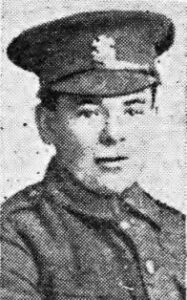
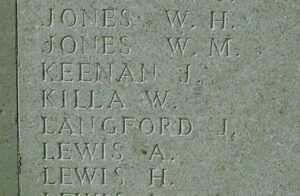
Benjamin James Lewis, Private, 811138, Canadian Infantry. Benjamin was born on 10 July 1889, the son of Daniel and Rachel Lewis, of Blaencwm, Llangynog. His mother had died prior to 1904, and his father remarried Sarah Stewart, of Ebenezer Cottage, Llangynog. Benjamin had emigrated to Canada before the war, where he worked as a Miner. Benjamin enlisted at Edmonton into the 50th Battalion (Alberta), Canadian Infantry on 7 December 1915, and moved to France in April 1916, where the Battalion was attached to the 10th Brigade, 4th Canadian Division. The Division then fought through the latter stages of the Somme Offensive in 1916, before moving to positions in front of Vimy Ridge, near Arras the following year. It was here, during the Canadians famed capture of Vimy Ridge, that Benjamin was killed on 12 April 1917. He was 28 years old, and is commemorated on the Vimy Memorial, France.
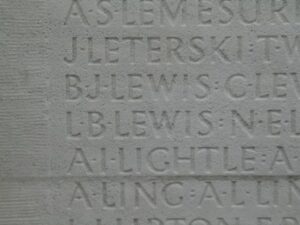
Edgar George Rees, Second Lieutenant, Royal Welsh Fusiliers. Edgar was born on 13 June 1890, the son of Thomas Vicary Rees and Annie Mary Rees, of The School House, Llangynog. He was educated at Queen Elizabeth Grammar School and at Aberystwyth University before marrying Gwenllan Lewis, at Treherbert in 1916. Edgar had enlisted as a Private into the Royal Welsh Fusiliers, and was commissioned into the Royal Welsh Fusiliers on 8 August 1916, being posted to the 19th Battalion. The battalion was attached to 119 Brigade, 40th (Bantam) Division, and moved to France between the 1st and 9th June, and moved to the front near Loos. Late in 1916 they moved south to the Somme, and fought at the Battle of the Ancre, and remained in the area over the winter. In March, 1917 the Germans withdrew to their shortened line, called the Hindenburg Line, and the 40th Division were one of the Divisions that followed the withdrawal. Later in the year they took part in the Battle of Cambrai, playing an important role in the attack on Bourlon Wood. Edgar was killed in action at Cambrai on 23 November 1917, aged 26. He is commemorated on the Cambrai Memorial, Louverval, France. His three other brothers also served, one of which, Thomas Ernald Davies, his half-brother, was also killed. (The memorial inside the Church shows B. G. Rees, which is incorrect).
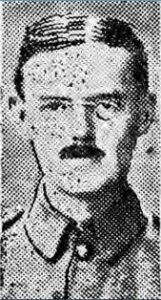
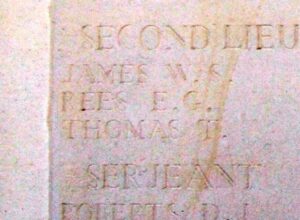
David John Thomas, Private, 320328, Welsh Regiment. David was the son of James and Esther Thomas, of Blaencwm, Llangynog, and had enlisted at Carmarthen into the Pembroke Yeomanry. The Pembroke Yeomanry moved to Egypt early in 1916, where it formed part of the Suez Garrison, before being merged with the Glamorgan Yeomanry in March 1917 to form the 24th Battalion, Welsh Regiment, and was attached to 231 Brigade, 74th (Yeomanry) Division. The Division then took part in the advance into Palestine, and fought at the Second and Third Battles of Gaza, before being involved in the capture of Jerusalem. David was killed soon after, during the affair of Huj, El Mughar and Junction Station, on 12 November 1917. He was 21 years old, and is buried at Kantara War Memorial Cemetery, Egypt.
Evan Thomas, Private, 70418, Royal Welsh Fusiliers. Evan was born on 28 November 1887, the son of David and Anne Thomas of the Wern Inn Llangynog. He worked at the Pontyberem Colliery before enlisting at Llanelli into the South Wales Borderers and was then posted to the 1st Battalion, Royal Welsh Fusiliers, which was in France attached to 22 Brigade, 7th Division. The Division had been in France since landing at Zeebrugge during October 1914, and had fought in almost every major battle thereafter. In March 1917 they followed up the German Retreat to the Hindenburg Line, and took part in Flanking Operations Round Bullecourt. The 7th were moved into a scene of incredible ferocity at Bullecourt, a strongly fortified village on the Hindenburg Line, and alongside the Australians played a major role in penetrating the village defences. Later in the year the Division moved to Ypres, and fought at the Battle of the Polygon Wood. They then took part in the Battle of Broodseinde, the Battle of Poelcapelle and the Second Battle of Passchendaele, and it was here that Evan was killed on 26 October 1917, aged 29. He has no known grave, and is commemorated on Panel 63-65 of the Tyne Cot Memorial, Belgium.
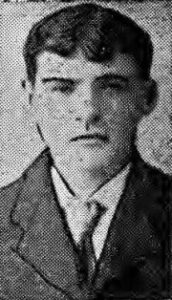
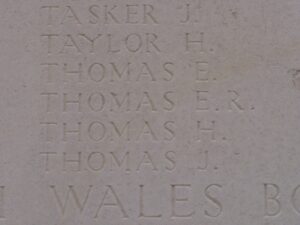
Albert Ernest Williams, Able Seaman, 218031, Royal Navy. Albert was born at Llangynog on 3 November 1884. Prior to the war he lived with his wife Helen Williams, at 5, Williams Street, Pontardulais, Glamorgan. He served in the Royal Navy, aboard HMS Good Hope, which was attached to the West Indies Squadron. Albert was killed when Good Hope was sunk with all hands at the Battle of Coronel on 1 November 1914. He was 29 years old, and is commemorated on Panel 3 of the Portsmouth Naval Memorial, Hampshire.
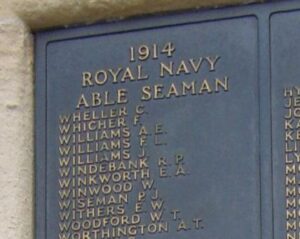
Benjamin Williams, Private, 15809, Kings Shropshire Light Infantry. Benjamin was the son of William and Sarah Williams of Eithinduon, Llangynog. Prior to the war he had resided with his wife Lizzie Williams, at Ann Street, Gadlys, Aberdare, where he worked at Bwllfa Collieries. Benjamin enlisted at Aberdare into the 7th Battalion, King’s Shropshire Light Infantry. The Battalion formed at Shrewsbury in September 1914, joining 76 Brigade, 25th Division. It moved to France on 28 September 1915, and then joined 3rd Division. The Division was on the Somme in the summer of 1916, and it was there that Benjamin was killed, during the Battle of Bazentin Ridge, on 14 July 1916, aged 28. He has no known grave, and is commemorated on Pier and Face 12A of the Thiepval Memorial, France.
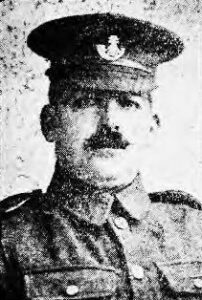
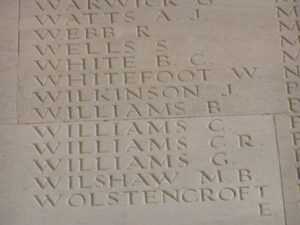
World War Two, 1939-1945
James Eric Howell Davies, Corporal, T/123583, Royal Army Service Corps. James was the son of Thomas Howell Davies and Margaret Davies, of Bankyfelin. He served with the 7th Anti Aircraft Brigade Company, Royal Army Service Corps, and was in France with the British Expeditionary Force after the Nazi invasion of Poland in 1939. James was then caught up in the desperate defence of France, and during the subsequent retreat to Dunkirk during May 1940. He was one of many men of the BEF who didn’t make it to Dunkirk, as the evacuation, called Operation Dynamo, ended on 3 June 1940. James died in Belgium two weeks after this, on 18 June 1940, although it is not clear how he died. He was 21 years old, and is buried at Adegem Canadian War Cemetery, Belgium, in Grave VI. AB. 2.
